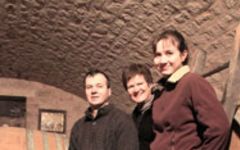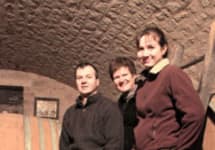Grossot Chablis Vaucoupin Premier Cru 2015
-
Wine
Spectator



Product Details
Your Rating
Somm Note
Winemaker Notes
The grapes are hand-harvested, sorted in the vineyards and again at the winery, and gently pressed in a horizontal pneumatic press to ensure the fullest extraction of flavors and aromas. The juice ferments very slowly at low temperature in stainless steel tanks, and after a first racking, the wine rests in tanks to develop on its lees. Grossot aims to balance the natural power and density of the Vaucoupin vineyard with finesse and soft acidity to produce a superb Chablis 1er Cru.
It needs at least three to five years in bottle to be fully enjoyed, but can be cellared for over 10 years.
Professional Ratings
-
Wine Spectator
A crisp, lemony white, with fine delineation and concentration to the apple and lemon flavors. Discreet yet long, offering a floral hint.
Other Vintages
2020- Decanter
-
Wine
Enthusiast -
Wine
Spectator
- Decanter
-
Robert
Parker -
Wine &
Spirits
-
Wine
Spectator



One of the most popular and versatile white wine grapes, Chardonnay offers a wide range of flavors and styles depending on where it is grown and how it is made. While it tends to flourish in most environments, Chardonnay from its Burgundian homeland produces some of the most remarkable and longest lived examples. California produces both oaky, buttery styles and leaner, European-inspired wines. Somm Secret—The Burgundian subregion of Chablis, while typically using older oak barrels, produces a bright style similar to the unoaked style. Anyone who doesn't like oaky Chardonnay would likely enjoy Chablis.

The source of the most racy, light and tactile, yet uniquely complex Chardonnay, Chablis, while considered part of Burgundy, actually reaches far past the most northern stretch of the Côte d’Or proper. Its vineyards cover hillsides surrounding the small village of Chablis about 100 miles north of Dijon, making it actually closer to Champagne than to Burgundy. Champagne and Chablis have a unique soil type in common called Kimmeridgian, which isn’t found anywhere else in the world except southern England. A 180 million year-old geologic formation of decomposed clay and limestone, containing tiny fossilized oyster shells, spans from the Dorset village of Kimmeridge in southern England all the way down through Champagne, and to the soils of Chablis. This soil type produces wines full of structure, austerity, minerality, salinity and finesse.
Chablis Grands Crus vineyards are all located at ideal elevations and exposition on the acclaimed Kimmeridgian soil, an ancient clay-limestone soil that lends intensity and finesse to its wines. The vineyards outside of Grands Crus are Premiers Crus, and outlying from those is Petit Chablis. Chablis Grand Cru, as well as most Premier Cru Chablis, can age for many years.
